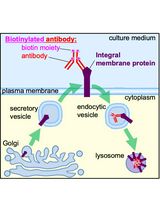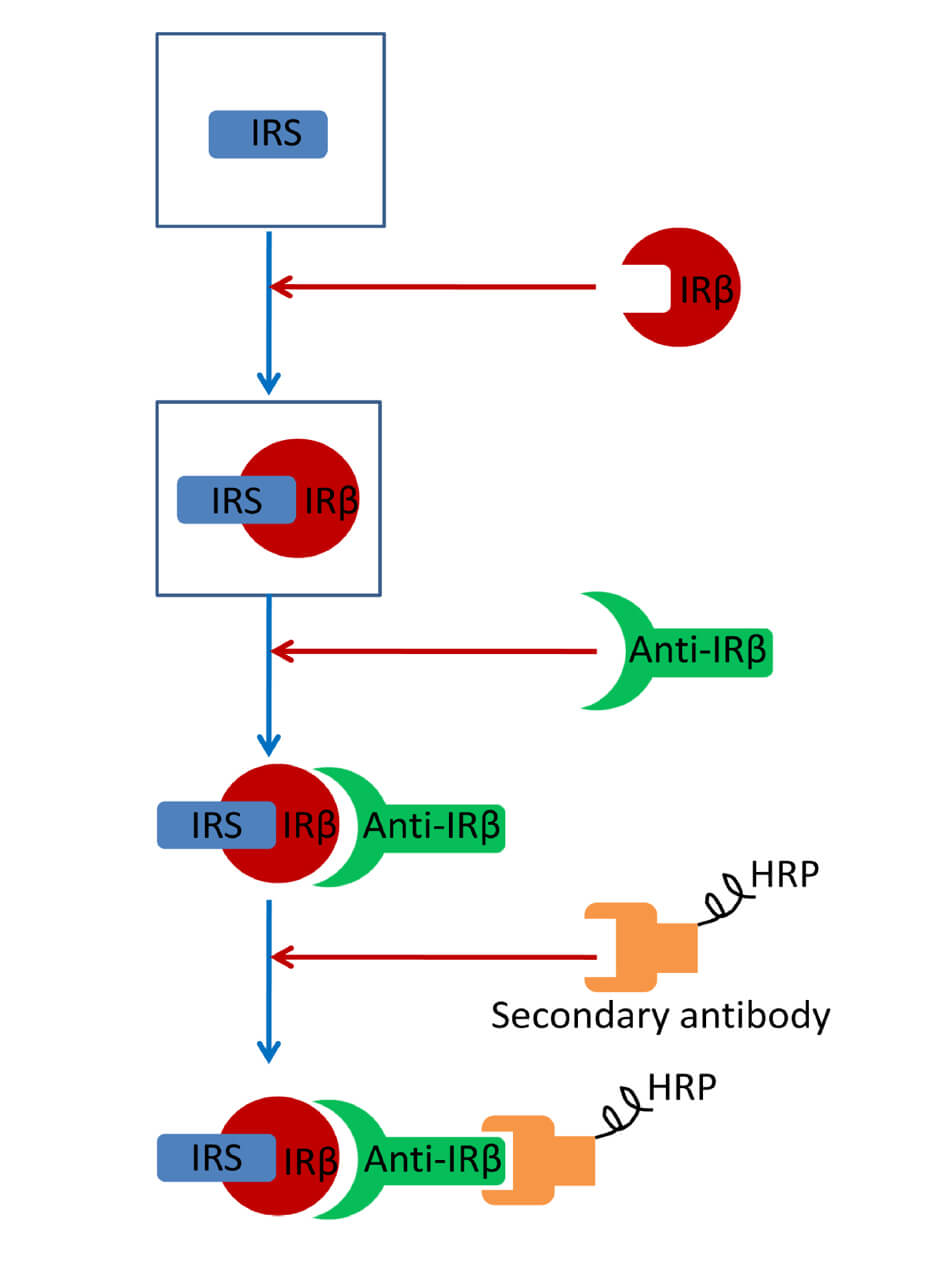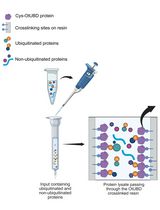- EN - English
- CN - 中文
Preparation of Parasite Protein Extracts and Western Blot Analysis
寄生虫蛋白质提取物的制备和蛋白印迹分析
发布: 2014年06月05日第4卷第11期 DOI: 10.21769/BioProtoc.1136 浏览次数: 26254
评审: Kanika GeraFanglian HeAnonymous reviewer(s)

相关实验方案

利用基于 Western blot 的生物素化抗体内吞检测法监测膜整合蛋白的内吞过程
Alexandra Graninger and Prasanna Satpute-Krishnan
2025年11月20日 1994 阅读
Abstract
In order to prepare protein extracts of Plasmodium falciparum blood stages for western blot analysis, infected red blood cells (iRBC) need to be separated from uninfected red blood cells (uRBC) which make up the bulk of the parasite culture. Depending on the localisation of the parasite protein of interest, different methods are available to achieve this. If the protein is present within the parasite or is attached to a cellular structure of the iRBC cell, saponin can be used. This reagent lyses the membranes of infected and uninfected erythrocytes, the Maurer´s clefts (vesicular structures in the iRBC) and the parasitophorous vacuole membrane containing the parasite but leaves the parasite plasma membrane intact, providing a convenient procedure to isolate intact parasites without uRBCs. However, this method has the disadvantage that the host cell cytosol and the parasitophorous vacuole (PV) content of iRBCs are lost. If this has to be avoided, it is possible to use a Percoll gradient to separate intact iRBCs from uRBCs. Sequential treatment with Tetanolysin and saponin can then be used to selectively release the iRBC cytosol and the PV content from the parasite. These selective lysis methods are also suitable to determine the subcellular localisation of a protein of interest.
Materials and Reagents
- Parasite culture
- Plasmodium falciparum (e.g. clonal line 3D7)
- Sterile, human 0+ erythrocyte concentrate (Blood bank)
- RPMI complete medium (see Recipes)
- RPMI-1640 (AppliChem GmbH, catalog number: A1538,9010 )
- NaHCO3 (Sigma-Aldrich, catalog number: S5761 )
- Glucose (Merck KgaA, catalog number: 1.08342.1000 )
- Albumax II (Life Technologies, Gibco®, catalog number: 11021-037 )
- Hypoxanthine (Sigma-Aldrich, catalog number: H9636 )
- 40 mg/ml gentamicine (Ratiopharm)
- RPMI-1640 (AppliChem GmbH, catalog number: A1538,9010 )
- Plasmodium falciparum (e.g. clonal line 3D7)
- Parasite protein extraction
- Sorbitol (Sigma-Aldrich)
- Triton X-114 (Enzo Life Sciences)
- 10x PBS (see Recipes)
- 0.03 % saponin lysis buffer (Sigma-Aldrich, catalog number: S4521 ) (see Recipes)
- Parasite lysis buffer (see Recipes)
- Tetanolysin (List Biological Labs, catalog number: 199 ) (see Recipes)
- 25x protease inhibitor cocktail mini (Roche Diagnostics, catalog number: 11836170001 ) (see Recipes)
- Percoll solutions (GE Healthcare, catalog number: 17-0891-02 ) (see Recipes)
- Sorbitol (Sigma-Aldrich)
- SDS-Page and western blot analysis
- PageRuler Prestained Protein Ladder (Thermo Fisher Scientific)
- Tris (Merck KGaA)
- CAPS (Sigma-Aldrich)
- SDS (SERVA Electrophoresis GmbH)
- Low fat milk powder (blotting grade) (Carl Roth, catalog number: T145.2 )
- ECL solution/Western Blot Detection Kit (Pierce Antibodies)
- Antibodies (e.g. mouse anti-GFP, Roche Diagnostics, catalog number: 11814460001 ; horseradish peroxidase-conjugated goat anti-mouse, dianova GmbH, catalog number: 115-035-062 )
- Electrophoresis buffer (see Recipes)
- 5x SDS sample buffer (see Recipes)
- 1 M Tris buffer (pH 6.8) (see Recipes)
- 1.5 M Tris buffer (pH 8.8) (see Recipes)
- Polyacrylamide gel with 5% stacking gel and 12% separating gel (see Recipes)
- CAPS buffer (1 L, 10 mM, pH 11.3) (see Recipes)
- Blocking solution (50 ml) (see Recipes)
- PageRuler Prestained Protein Ladder (Thermo Fisher Scientific)
Equipment
- Falcon tubes (15 ml, 50 ml)
- Centrifuge
- Eppendorf tubes (1.5 ml, 2 ml)
- Sterilisation filters (0.22 µm)
- Thermo block
- Gel electrophoresis chamber (Bio-Rad Laboratories)
- Nitrocellulose blotting membrane (Whatman, Protran®)
- Chromatography paper (Grade 3 MM CHR) (GE Healthcare)
- Tank blot device (Bio-Rad Laboratories)
- Rolling device
- Transparent sheets
- Developer (Agfa-Gevaert Group)
- Developing cassette
- X-ray film (Agfa-Gevaert Group)
Procedure
文章信息
版权信息
© 2014 The Authors; exclusive licensee Bio-protocol LLC.
如何引用
Readers should cite both the Bio-protocol article and the original research article where this protocol was used:
- Heiber, A. and Spielmann, T. (2014). Preparation of Parasite Protein Extracts and Western Blot Analysis. Bio-protocol 4(11): e1136. DOI: 10.21769/BioProtoc.1136.
- Heiber, A., Kruse, F., Pick, C., Gruring, C., Flemming, S., Oberli, A., Schoeler, H., Retzlaff, S., Mesen-Ramirez, P., Hiss, J. A., Kadekoppala, M., Hecht, L., Holder, A. A., Gilberger, T. W. and Spielmann, T. (2013). Identification of new PNEPs indicates a substantial non-PEXEL exportome and underpins common features in Plasmodium falciparum protein export. PLoS Pathog 9(8): e1003546.
分类
微生物学 > 微生物生物化学 > 蛋白质 > 免疫检测
生物化学 > 蛋白质 > 分离和纯化
生物化学 > 蛋白质 > 免疫检测 > 免疫印迹法(WB )
您对这篇实验方法有问题吗?
在此处发布您的问题,我们将邀请本文作者来回答。同时,我们会将您的问题发布到Bio-protocol Exchange,以便寻求社区成员的帮助。
Share
Bluesky
X
Copy link










